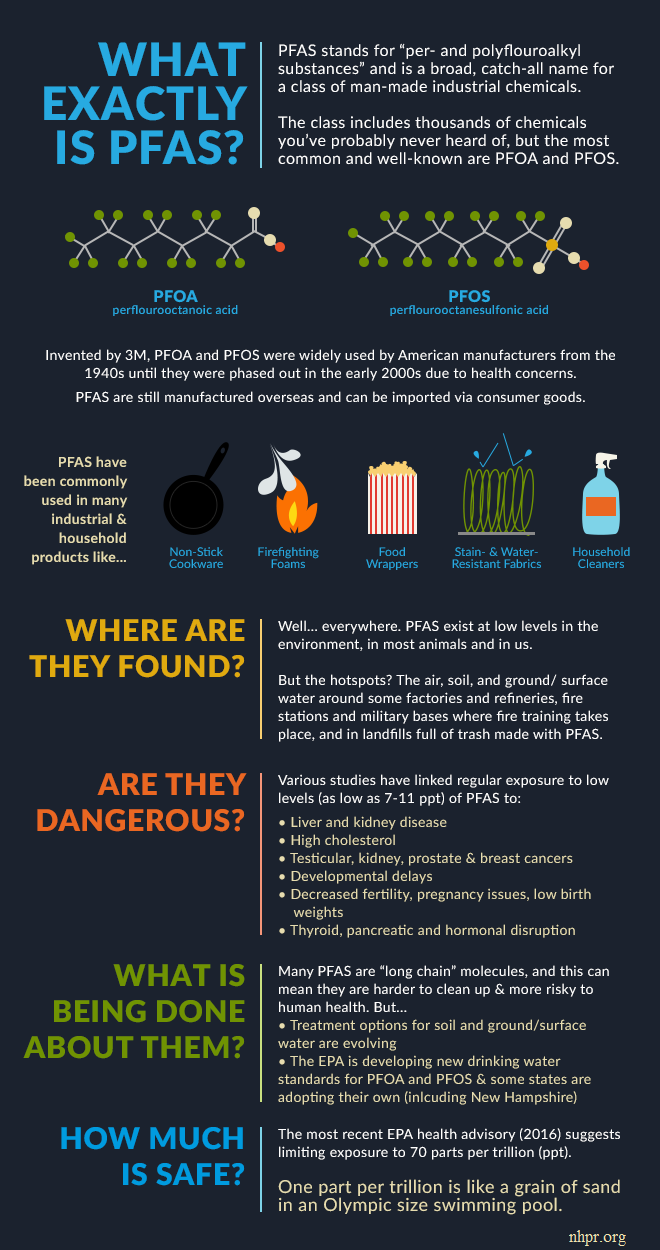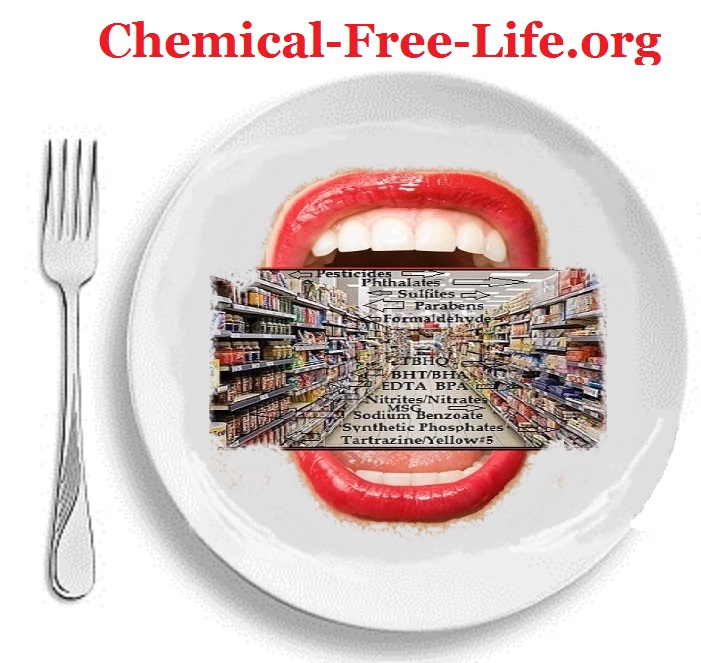The PFAS group (per- and polyfluoroalykyl substances: PFOA, PFOS) are called “forever chemicals” because PFAS takes thousands of years to dissipate. After decades of heavy industrial use in the U.S. (in everything from processed food packaging, to furniture, to dental floss and nearly everything in-between), despite no longer being used by industry in the U.S. (but may still be present in products imported from other countries), the PFAS chemical group is now ubiquitous, found in the home and external environments, food, drinking water, and the human body. Scientific studies have demonstrated that PFAS is a toxic chemical and numerous adverse health consequences have been linked to it including some kinds of cancers (especially breast, testicular and prostate cancers), liver problems, heart disease, hormonal disruption, low birth weight and numerous other health problems including thyroid problems, high cholesterol, kidney problems, prostate problems and fertility problems. Now, another adverse health consequence has been added to that list: tooth decay in children.
–
Study overview
As a part of the National Health and Nutrition Examination Survey, there were 629 children who participated in the study, ranging in age from 3 to 11 years old. Samples of the children’s blood were analyzed for PFAS in 2013 and 2014. Their tooth decay and other factors — such as their race, their BMI and how often they brushed their teeth — were assessed.
–
Study findings
Researchers found that higher concentrations of PFAS are associated with greater tooth decay in children. Of the seven PFAS that were analyzed, perfluorodecanoic acid was the one that correlated with higher levels of tooth decay.
–
“Due to the strong chemical bonds of PFAS, it is difficult for them to breakdown, which makes them more likely to be persistent within the environment, especially in drinking water systems. A majority of people may not be aware that they are using water and other products that contain PFAS.”
-Dr. Christopher Waters
–
How does the PFAS chemical group trigger tooth decay?
According to other research, perfluorodecanoic acid may disrupt the healthy development of enamel, which is what makes teeth hard. That disruption can leave teeth susceptible to decay.
–
Solutions
To minimize tooth decay from the PFAS chemical group and other sources, use a home water filtration system (see the latest findings on the effectiveness of these systems here), significantly reduce or eliminate processed foods at the grocery store and eating out at fast food and conventional restaurants, and begin eating whole foods from fresh, organic ingredients you prepare yourself, and as soon as it is possible, replace furniture manufactured from the 1975 to 2013, replace older vinyl flooring and carpeting in your home environment, and minimize purchase of products made in countries outside the U.S. that may contain PFAS chemicals. And of course, regular dental hygiene and dental check-ups are a must.
–

–
Here are some other research findings on PFAS and health-related concerns:
Toxic PFAS Chemicals may be Slipping Right Through Your Home Water Filtration System
Life-Altering Toxic Chemicals: A Brief History
Eating Out Linked with Higher Levels of Toxic Chemicals in Your Blood
Toxic Forever Chemicals Lurking in Eco-Friendly Food Packaging?
Stop Exposing the Public to Unnecessary Toxic Chemicals: Scientists
Toxic Forever Chemical PFAS Leaching into Food, FDA Confirms
Kids Carry Toxic Chemicals in Their Bodies from Vinyl Flooring, Furniture
Toxic Forever-Chemical in Your Drinking Water: Status Update
Toxic Industrial Chemicals Pass to Fetus Throughout Pregnancy: Scientists
Toxic Chemical Discovered in Dental Floss
Another Common Household Chemical Linked to Harming Cats
Increased weight gain linked with common chemicals
Researchers Discover High Levels of Toxic Industrial Chemical in U.S. Drinking Water
Journal Reference: R. Constance Wiener, Christopher Waters. Perfluoroalkyls/polyfluoroalkyl substances and dental caries experience in children, ages 3–11 years, National Health and Nutrition Examination Survey, 2013–2014. Journal of Public Health Dentistry, 2019; 79 (4): 307 DOI: 10.1111/jphd.12329



1 Comment
Comments are closed.